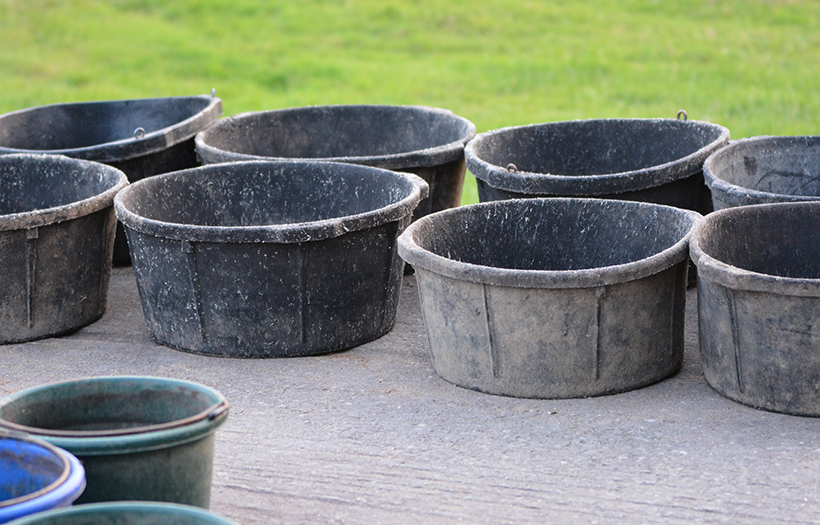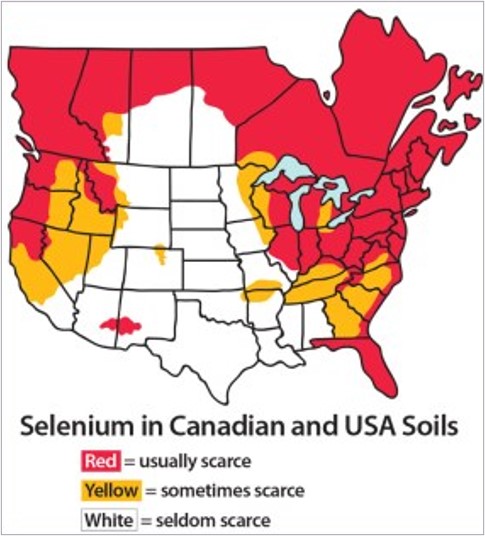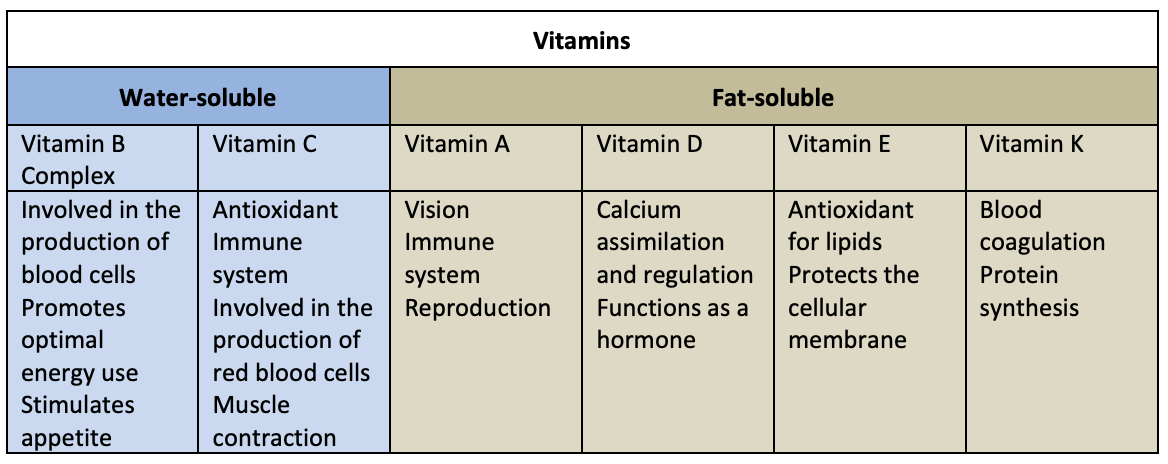Complete Feeds: All Feeds are Not Created Equal

When selecting or purchasing a feed, it is important to ask for the ingredient list from the manufacturer because, the guaranteed analysis on the product label will not provide you with enough relevant nutritional information.
However, much like it is for many of us at the grocery store, even with the list of ingredients in hand, most horse owners will not be better informed because they do not know the real value of each ingredient.
The following fact sheet presents the most common ingredients in equine nutrition, helping to demystify their nutritional value as well as their quality, since the latter will have a significant impact on the results obtained.
ENERGY INGREDIENTS
These are the ingredients which provide calories. They are used to promote weight gain, to improve overall condition and provide energy for work, breathing, etc. There are three main sources of energy: grain or starch, which are a source of carbohydrates (e.g. oats, barley, corn), fats (e.g. vegetable oil) and fibre (e.g. beet pulp, hay). They are not all equally effective and will give different results on the horse. A horse that performs anaerobic work (brief and intense exercise) will need more carbohydrates than a horse that is exercised aerobically (moderate exercise for longer periods).
| Energy Source | Digestible energy |
|---|---|
| Vegetable Oil | 8.98 Mcal/kg |
| Oats | 2.9 Mcal/kg |
| Corn | 3.88 Mcal/kg |
| Barley | 3.67 Mcal/kg |
| Hay | 1.9 Mcal/kg |
| Beet Pulp | 2.33 Mcal/kg |
Note that vegetable oil contains three times more calories per kilogram than oats. As such, it is much more effective than grain to promote weight gain, and since it does not contain carbohydrates or starch, it will not induce excitability.
GRAINS
The processing of grains influences their digestibility. If a grain is simply served whole or crimped (with the exception of oats, a whole subject that should be addressed in a separate article), it will not be readilly digestible in the small intestine, where it should normally be absorbed. What remains undigested will pass on to the large intestine, where fibre is fermented. The fibre is not digested by the horse itself, but rather by the microflora (bacteria and protozoa) that lives in its large intestine. When this microflora, which is adapted to digest fibre, digests grain, it produces gas and acid that destabilize the large intestine’s environment, making the horse susceptible to gas colic. The following chart compares grain digestibility by types of processing:

Quality should also be considered when choosing grains, with respect to the following criteria in particular:
- Specific weight: The weight of the grain in relation to its volume. The heavier the grain, the more starch it contains, therefore the more calories. There are large differences between batches, which makes the actual calorie count vary in a feed.
- Contamination by moulds and toxins: Can affect the horse’s respiratory, digestive and reproductive systems. These moulds and toxins grow in the fields, especially during wet summers. There are tests to determine if the grain is contaminated, but these can become very expensive to run for small mills without laboratories. At Purina Canada, all our grains are tested to meet premium standards.
VEGETABLE OIL
Vegetable oil is an excellent source of calories. It has the most concentrated source of energy and will not produce excitability side effects, while helping to protect the stomach. As for other ingredients, all oils are not the same and they are not all equally efficient. One of the key things to consider when evaluating an oil is the omega-6 to omega-3 ratio. According to the literature, a balanced ratio of omega-6:omega-3 fatty acids should be less than 10:1 and ideally closer to 5:1.
For example, the oil contained in rice bran has an omega-6:omega-3 ratio of 19:1 while soybean oil has a much more favourable ratio of 7:1.
Why do companies use rice bran oil, then? The availability and cost of an ingredient are major factors, but marketing considerations may also justify the choice of one ingredient over another. Another point to consider is that adding high levels of oils to a product may be a challenge depending on the required technology. The following chart lists the oils by quality according to their omega 6/3 ratios:

FIBRE
Fibre has the lowest concentration of calories, but it may be sufficient for some easy keepers. Hay usually contains between 1.8 Mcal/kg and 2.2 Mcal/kg of energy. Unfortunately, since the summer of 2017 was very wet, the general hay quality is rather poor this year. Dry harvest days were rare, so the hay was often cut too mature. Hay is not the only source of fibre for horses, however. The following are some examples of fibre sources used by feed companies:
| Ingredient NDF (%) | Lignin (%) | Lignin/NDF Ratio (%) |
|---|---|---|
| Oat Shells 69.6 | 6.3 | 8.2 |
| Soy Shells 61.4 | 2.8 | 3.7 |
| Beet Pulp 41.9 | 3.6 | 4.8 |
| Wheat Bran 41.0 | 4.1 | 9.0 |
| Rice Bran 4.1 | 4.1 | 48.0 |
The higher the lignin/NDF ratio, the less the fibre is digestible. This is why beet pulp and soybean hulls are called “superfibres”. They are the most readily digestible.
PROTEIN
Before talking about crude protein, a term that does not mean much in of itself, it is important to discuss amino acids, which are the building blocks of protein. A protein is a chain of amino acids, some of which can be synthesized by the horse while others must come from its diet. The latter are referred to as limiting amino acids. Imagine proteins as sentences, and amino acids as the letters of the alphabet where the non-limiting amino acids are the consonants and the limiting amino acids are the vowels. If A and E are missing, you will have trouble forming sentences! The same goes for protein. Even if you have plenty of crude protein, if you are missing limiting amino acids, the others will not be enough. This is why the quality of protein is more important than the percentage of total protein written on the label. The most limiting amino acids are lysine and methionine, which can be found in soybean meal and corn gluten respectively. It is also possible to simply add amino acids to a feed or supplement. The best way to know if a feed contains additives is to check the list of ingredients and look for lysine and Linseed > Canola > Soybean > Sunflower > Corn > Rice bran methionine (the two most limiting amino acids), because you will not find this data on the guaranteed analysis label.
VITAMINS AND MINERALS
Vitamins and minerals are essential to horse nutrition for three major reasons:
- Hay CANNOT meet all nutritional needs. Vitamin and mineral deficiencies can be subclinical and complex to treat and diagnose.
- The horse NEEDS vitamins and minerals to be in top shape to perform optimally and to have a good reproductive and immune system, among others.
MINERALS
Minerals are divided in two categories: macrominerals, which are given in larger quantities, and microminerals, also known as trace minerals or trace elements, which are needed in small amounts.
Macrominerals
| Mineral | g/kg |
|---|---|
| Ca | 15 |
| P | 10 |
| K | 2 |
| Na | 1.6 |
| Cl | 1.1 |
| S | 1.5 |
| Mg | 0.4 |
Microminerals
| Mineral | g/kg |
|---|---|
| Fe | 20-80 |
| Zn | 10-15 |
| Cu | 1-5 |
| Mo | 1-4 |
| Se | 1-2 |
| I | 0.3-0.6 |
| Mn | 0.02-0.1 |
| Co | 1-15 |
Macrominerals generally come from a mineral source, while some trace elements can be given in chelated form, which makes them easier to assimilate by the horse. Most often these microminerals (copper, zinc and manganese) are surrounded by methionine, a sulfur-containing amino acid. Organic selenium is also available in the form of selenium yeast. If all minerals are essential for horse health, one might ask why there is such an emphasis on selenium. Simply put, it is because serious selenium deficiencies lead to death. Foals whose dams lacked selenium during pregnancy risk dying within 24 to 48 hours of their birth from white muscle disease, and adult horses suffering from long-term deficiencies may die as well. Since our soils do not contain selenium, the only way to ensure adequate selenium intake is to provide horses with a complete feed and/or a supplement. A 500 kg adult horse requires between 1 mg and 5 mg of selenium per day.

VITAMINS
Vitamins fall into two broad categories: water-soluble and fat-soluble. Water-soluble vitamins (vitamin B complex and vitamin C) cannot become toxic because any excess intake will be eliminated in the urine. On the other hand, fat-soluble vitamins (vitamins A, D, E and K) may become toxic because they accumulate in fatty tissue and the liver. People are often inclined to buy a product because it contains high levels of vitamins A and D thinking more is better, but if these vitamins are too high in proportion to other nutrients, it may in fact limit the amount that can be fed to avoid toxicity. All vitamins are essential, and they are usually already balanced in a supplement or a complete feed. The following table gives a summary of their roles:

WHAT ABOUT ANIMAL BY-PRODUCTS?
It is legal to use animal by-products (blood meal, feather meal, animal fat, etc.) in horse feed in Canada. As the horse is an herbivore, its digestive system is not adapted for this type of protein. Of course, in nature the horse does not eat meat! This is another reason to request a product’s ingredient list, since these animal by-products can be used to increase the raw protein and calories at low cost, although they are not widely used.
